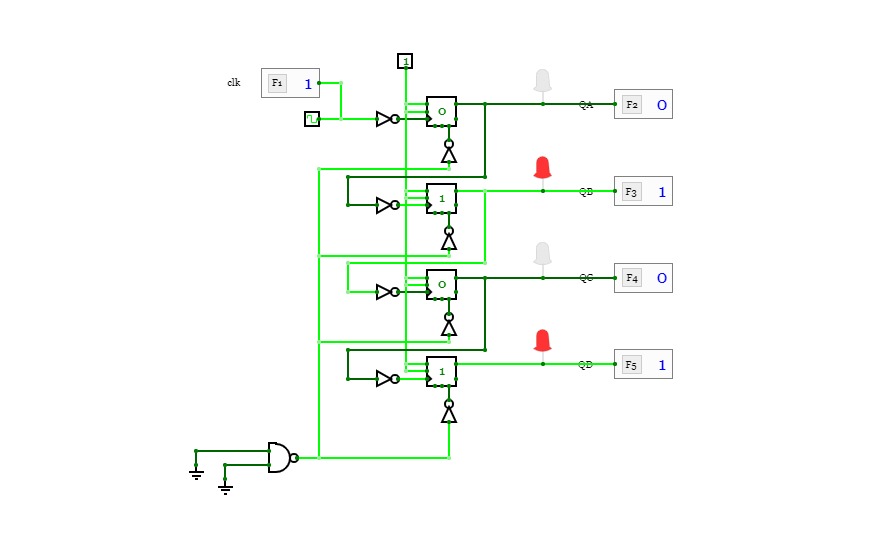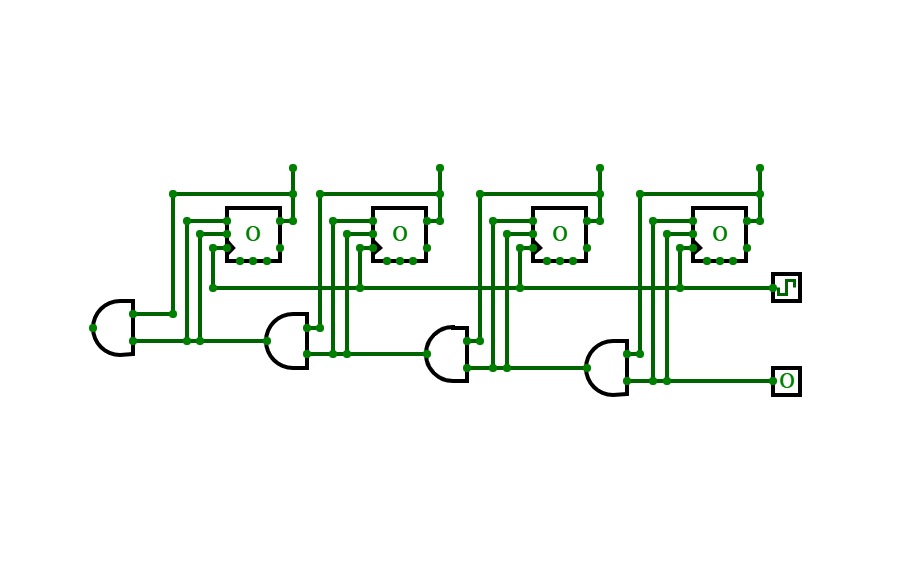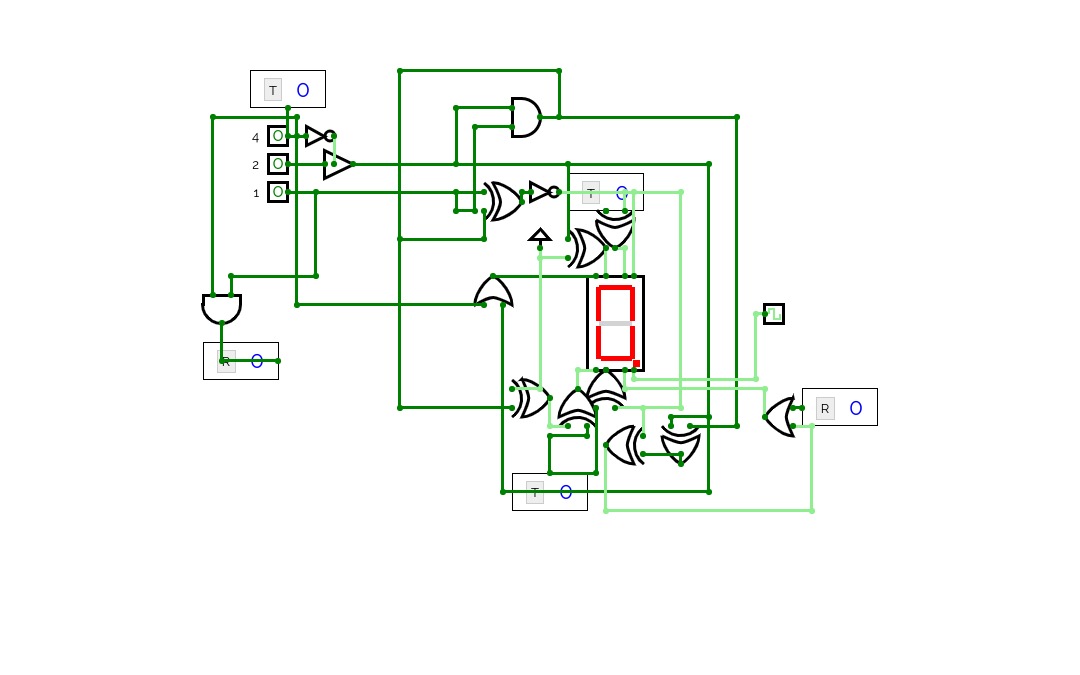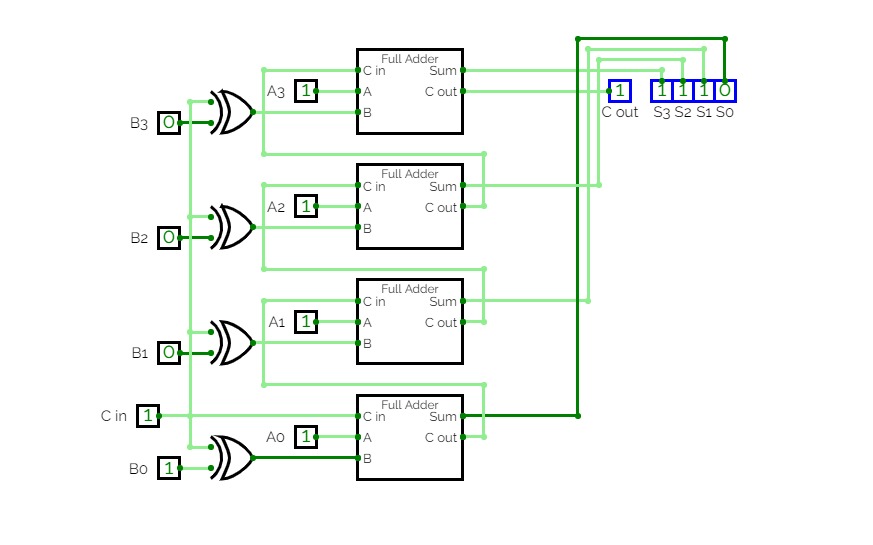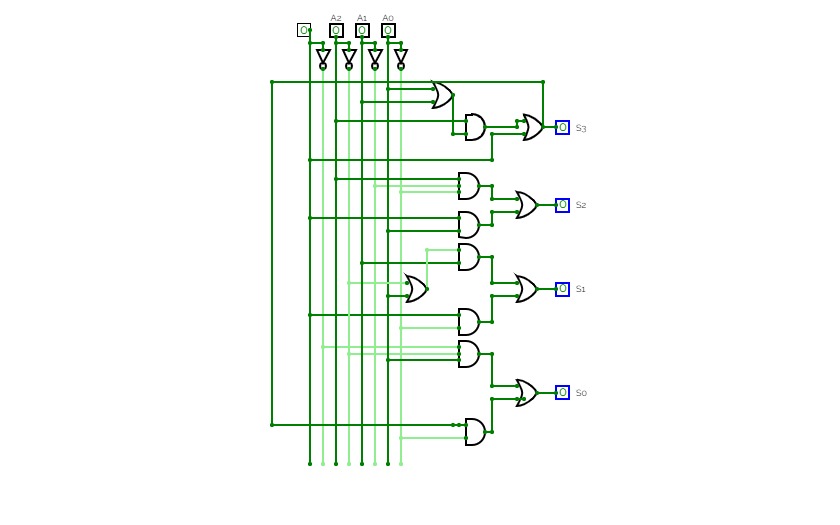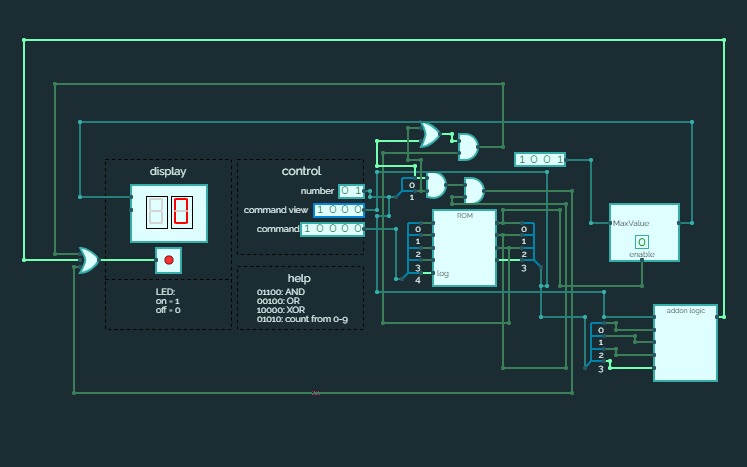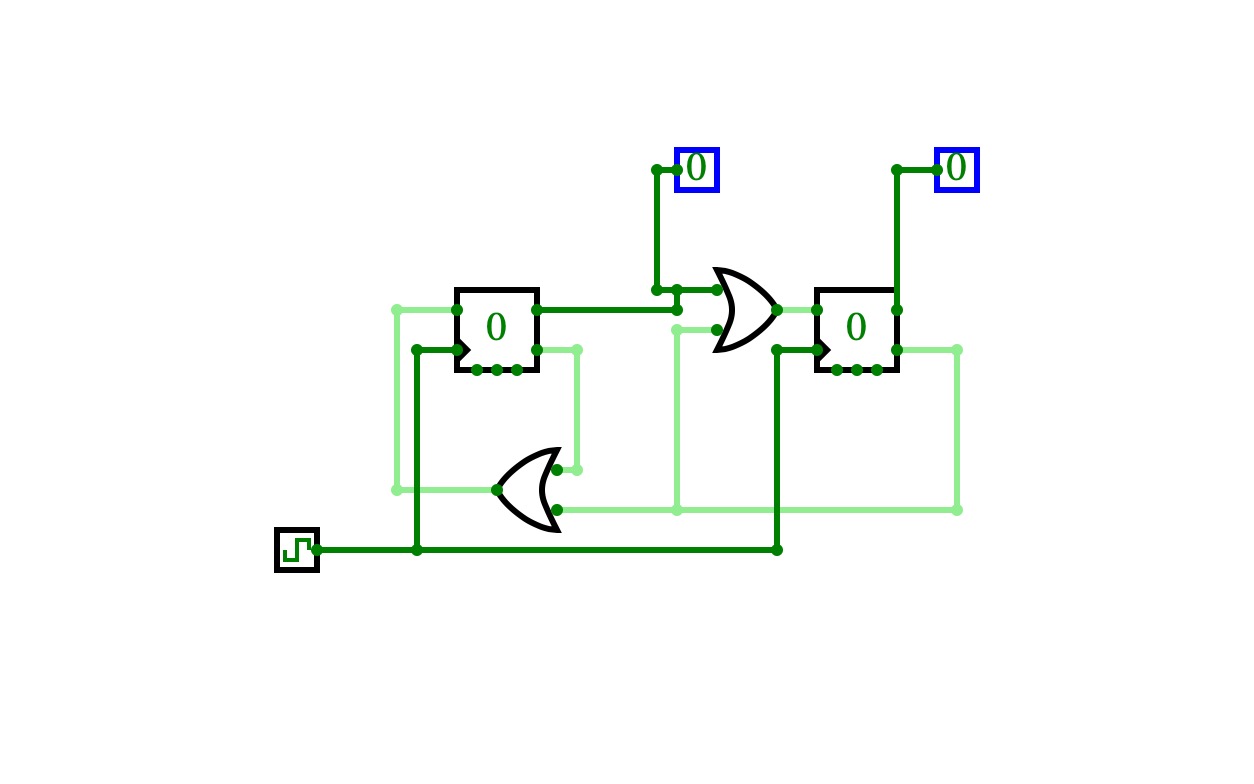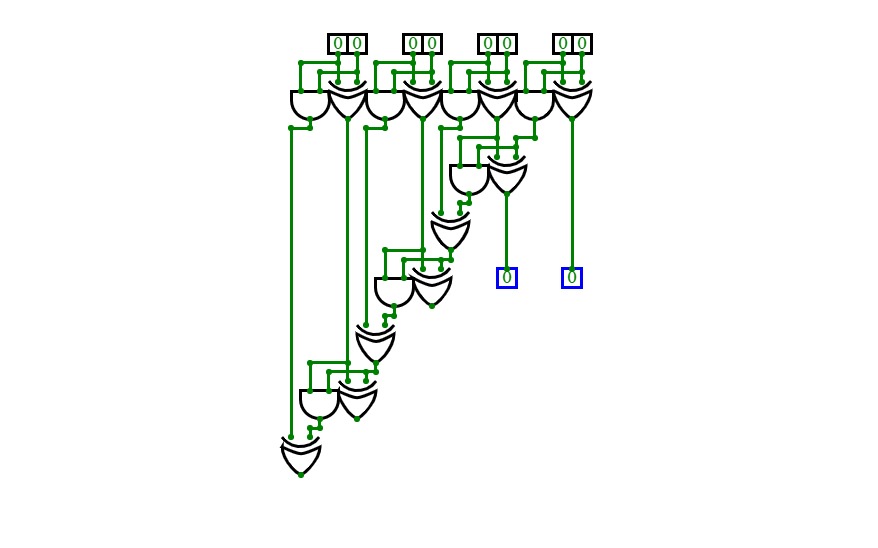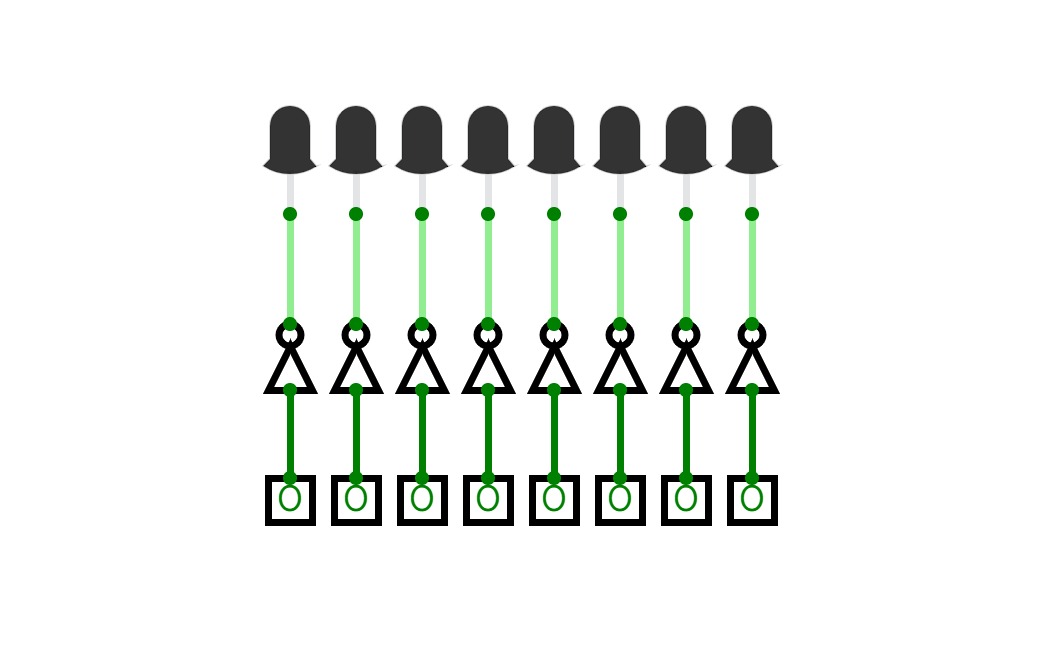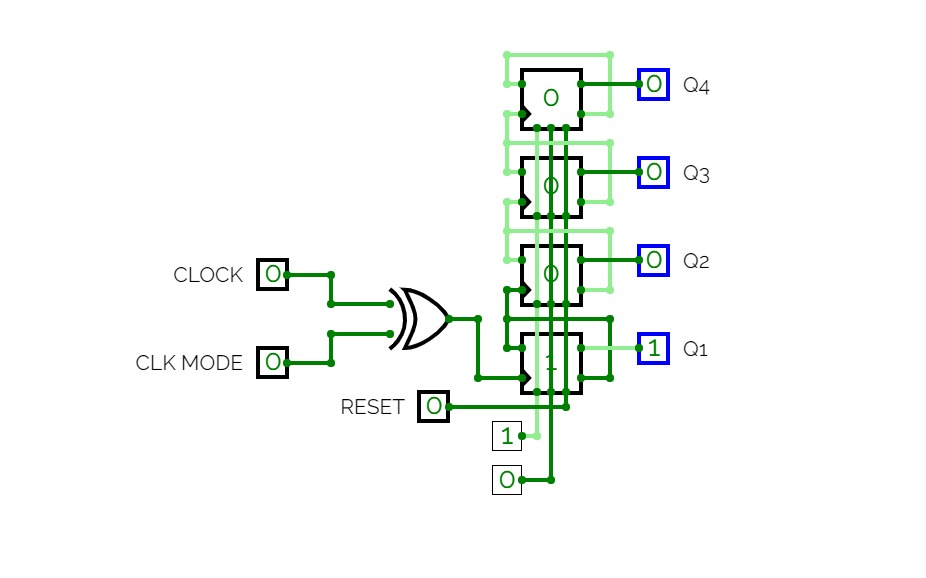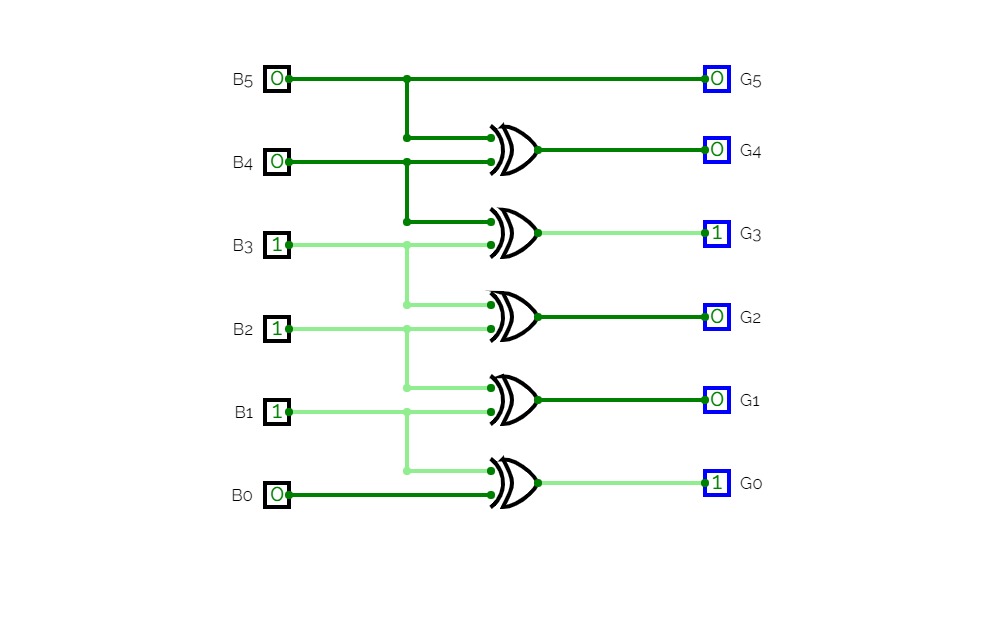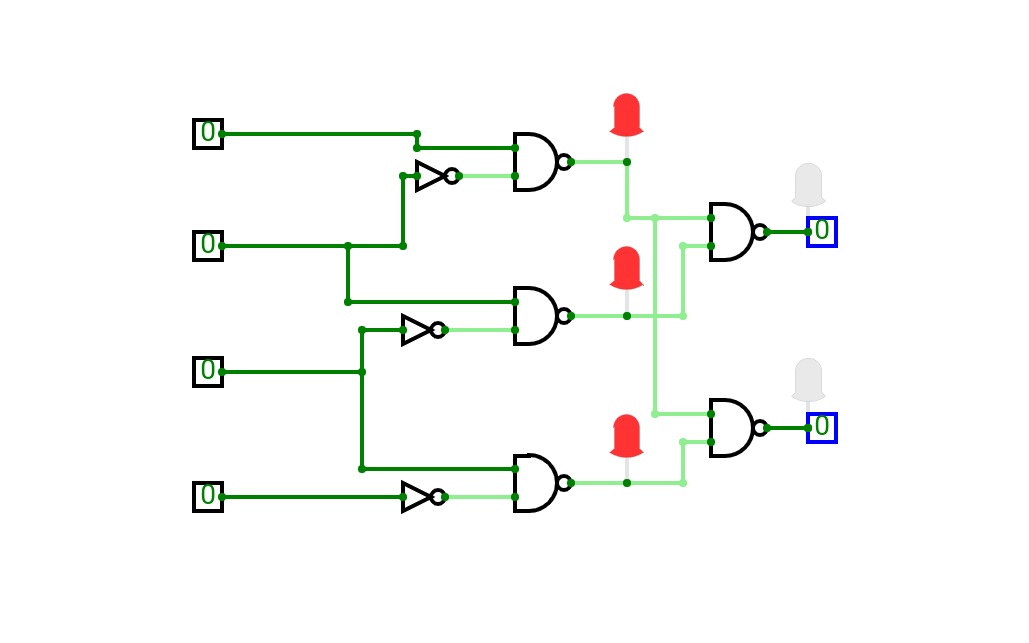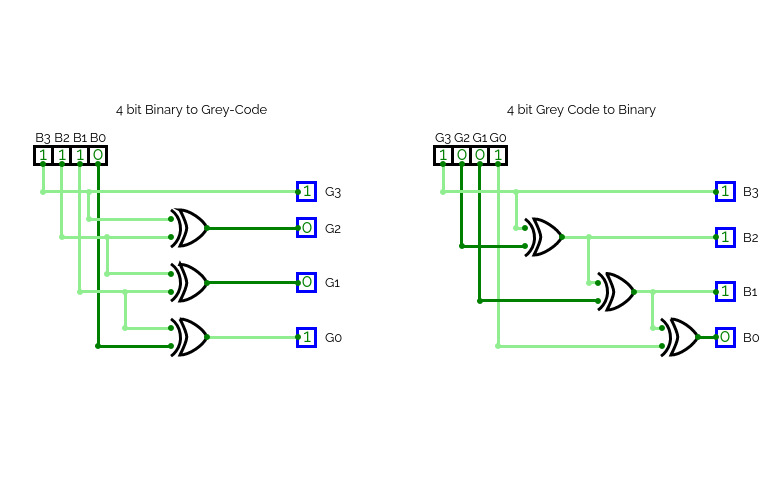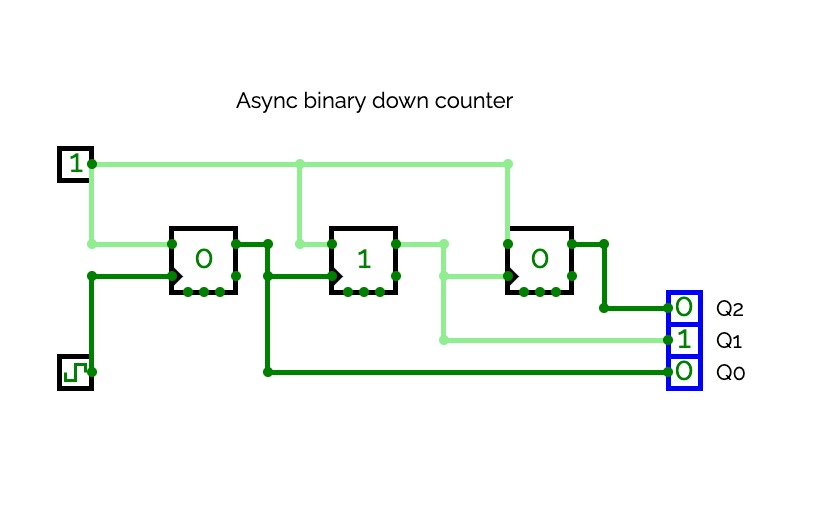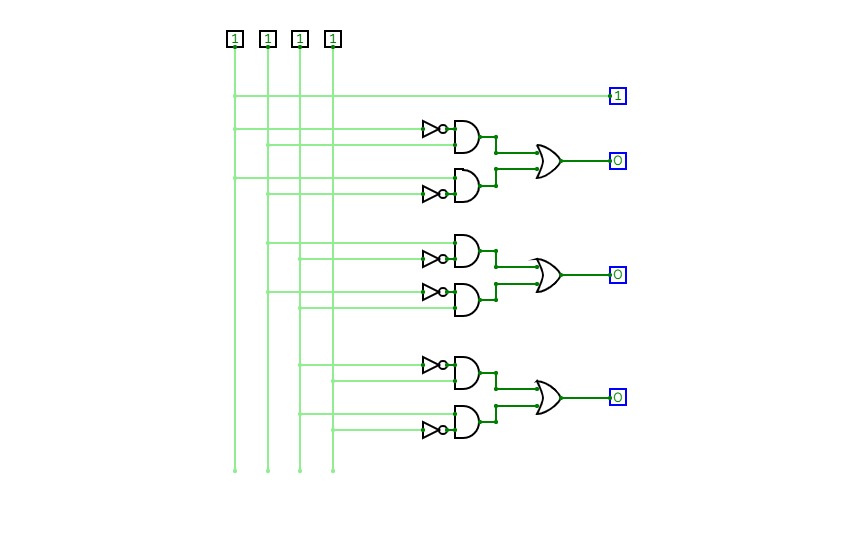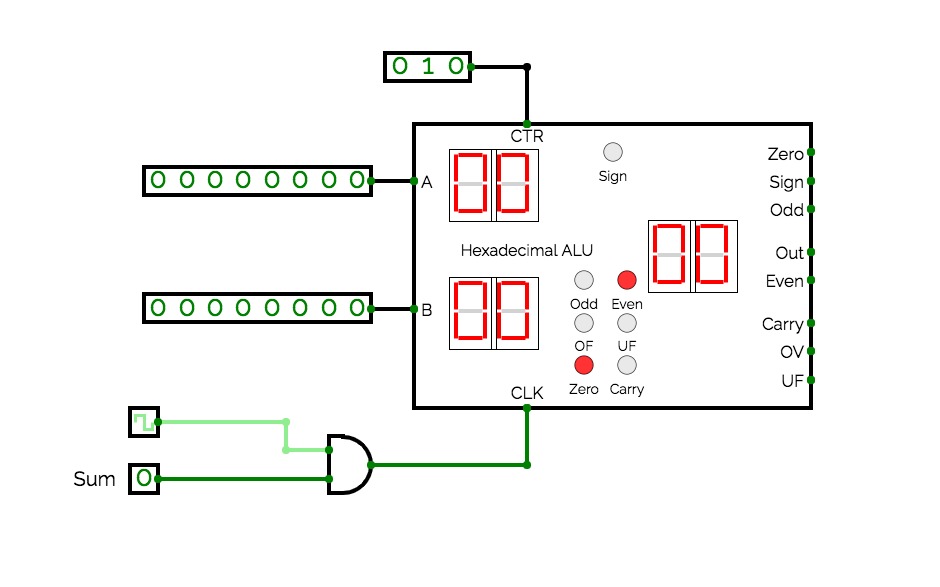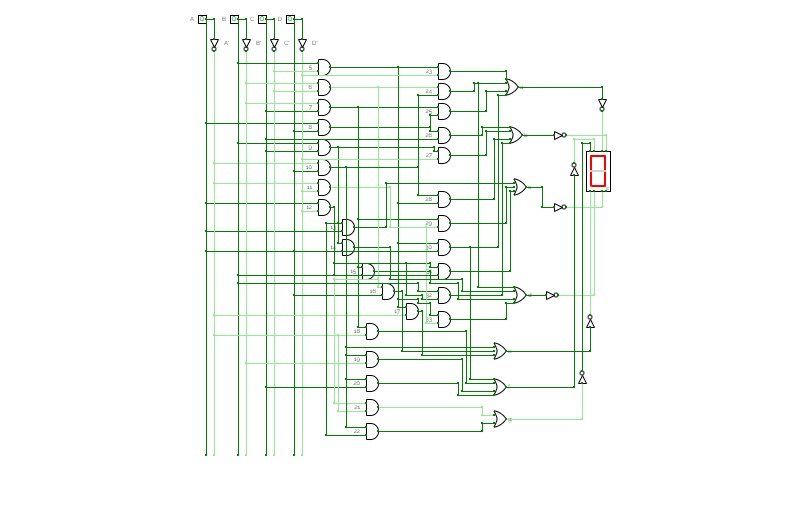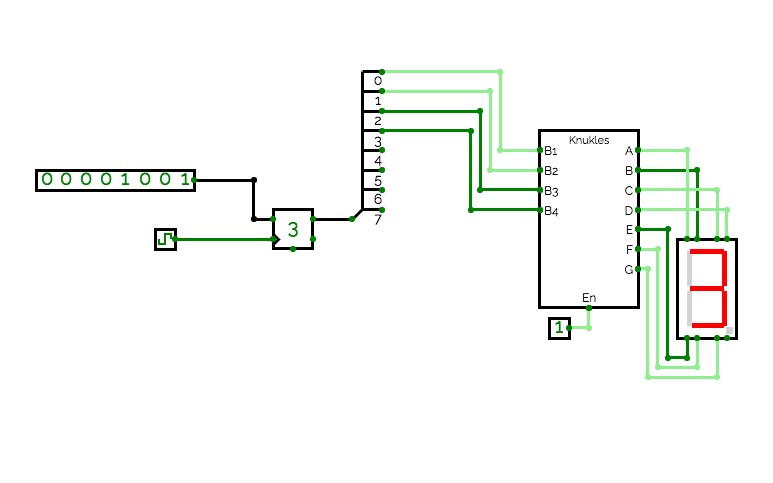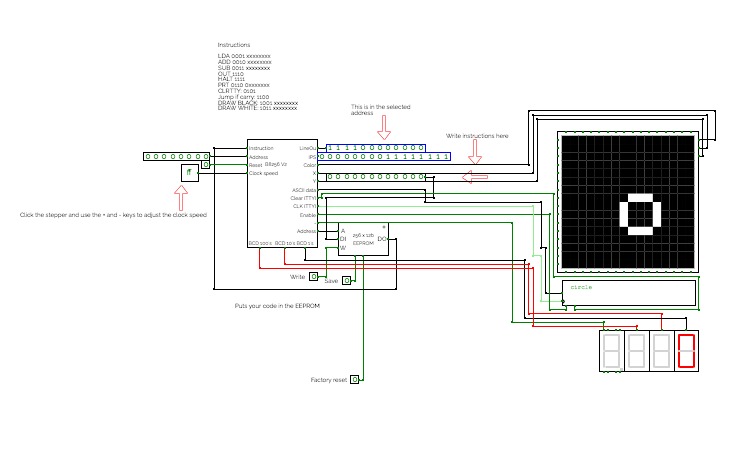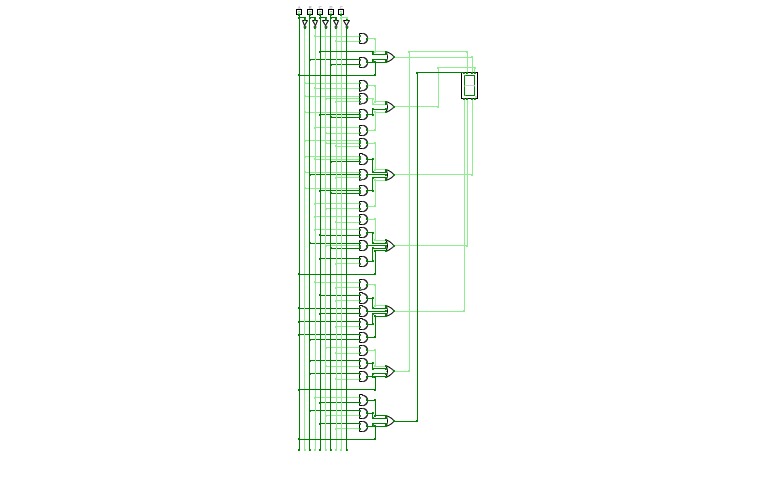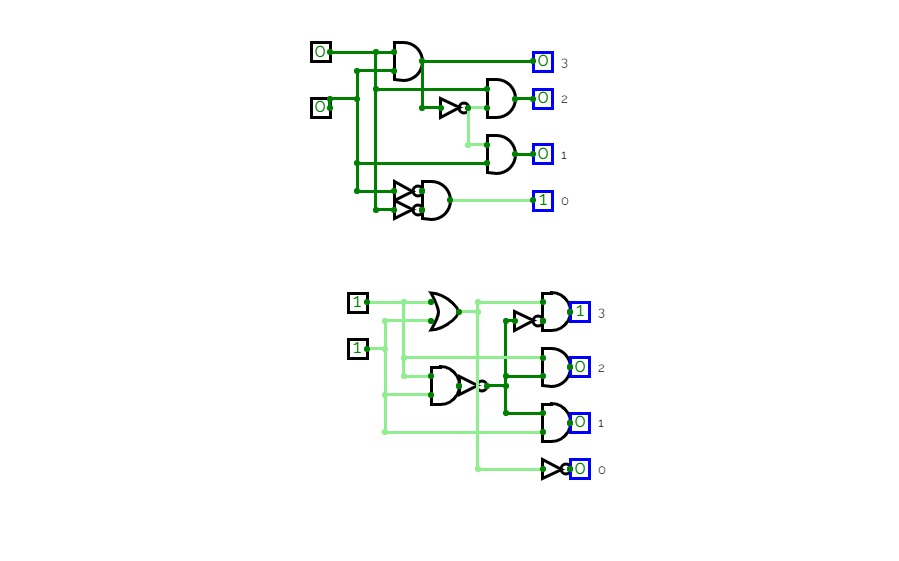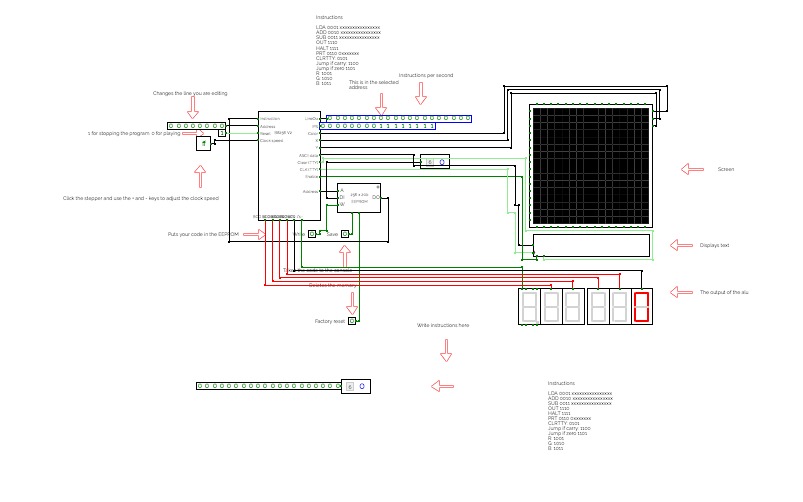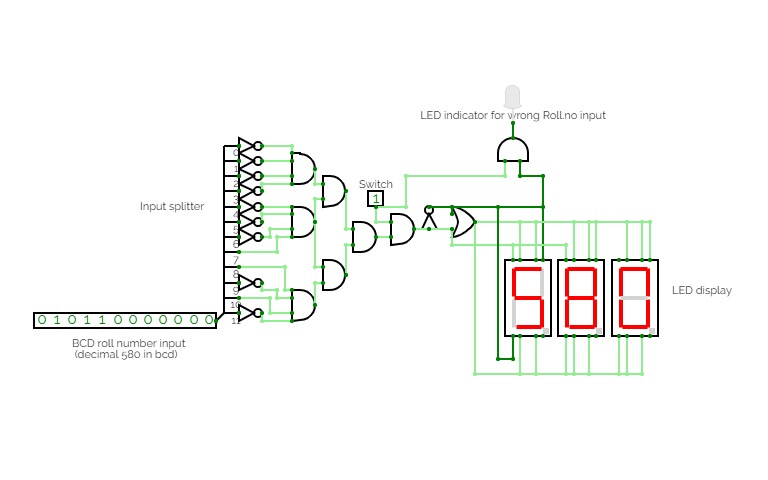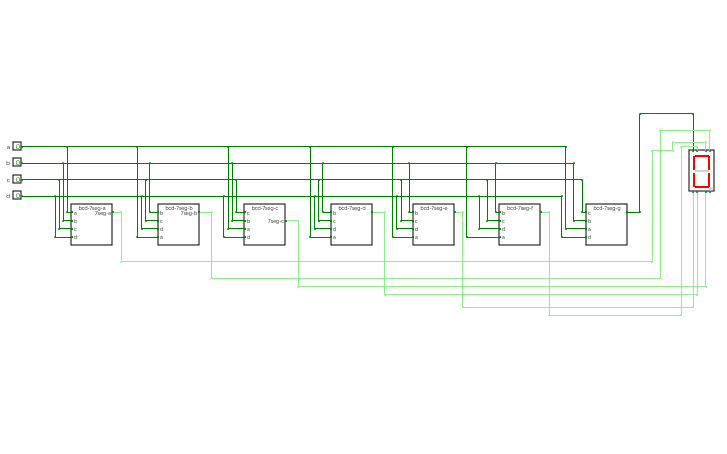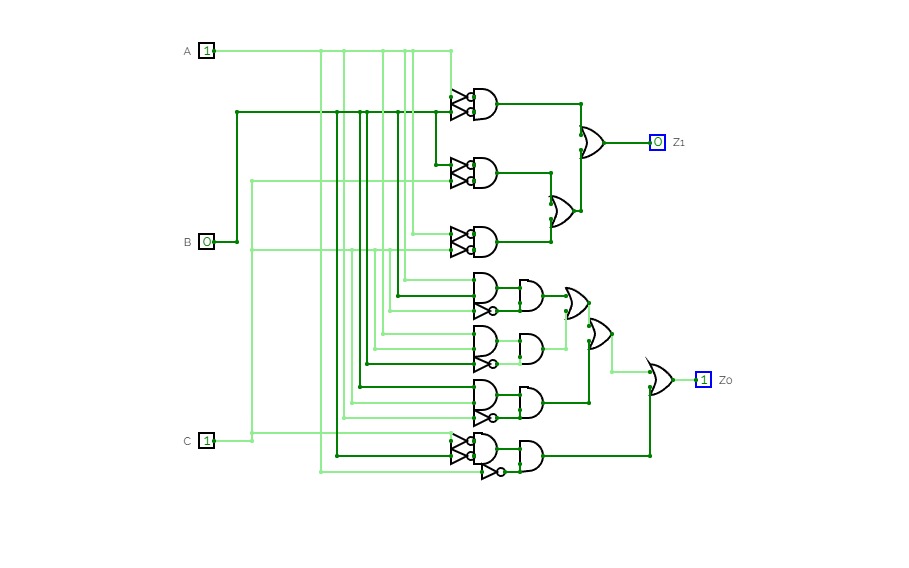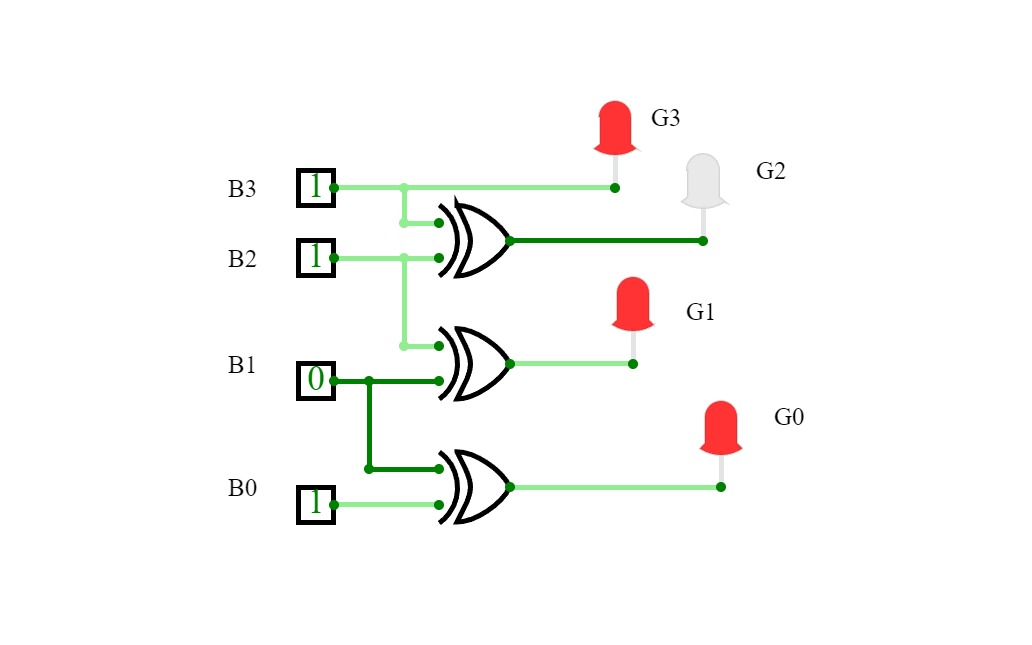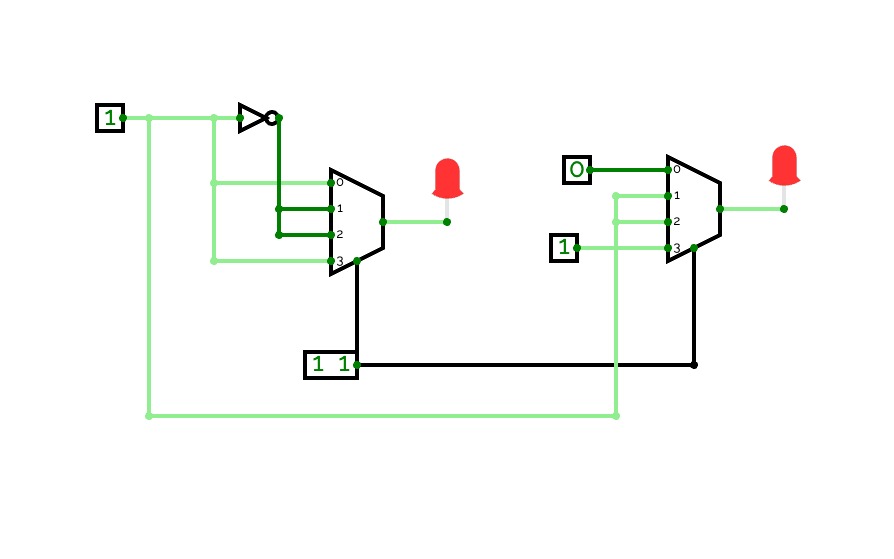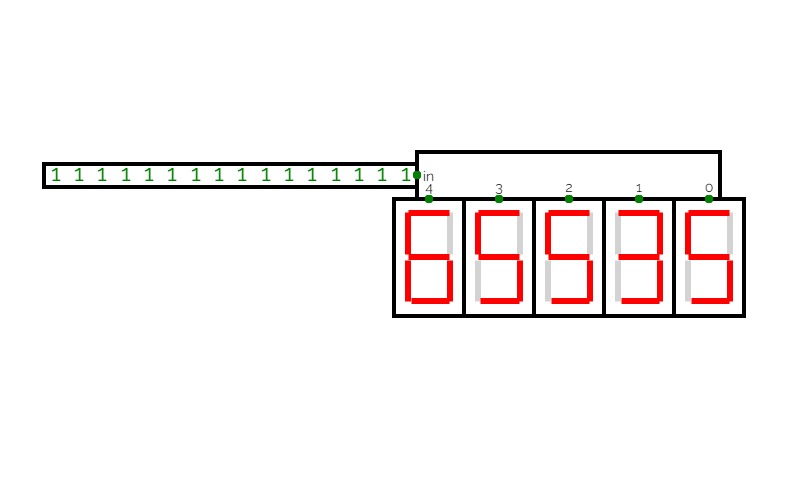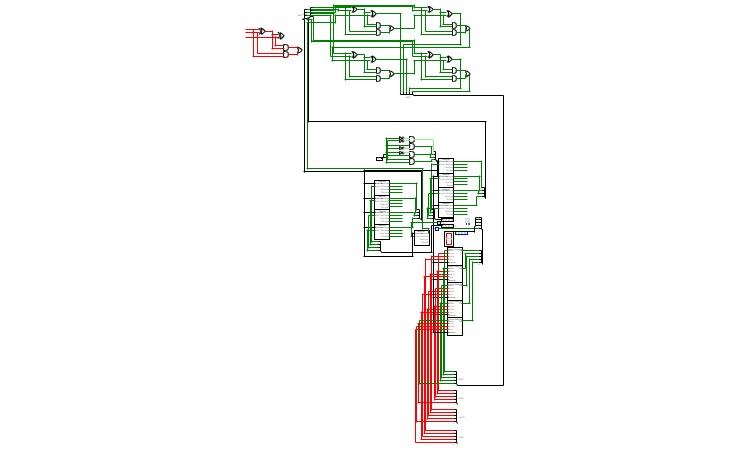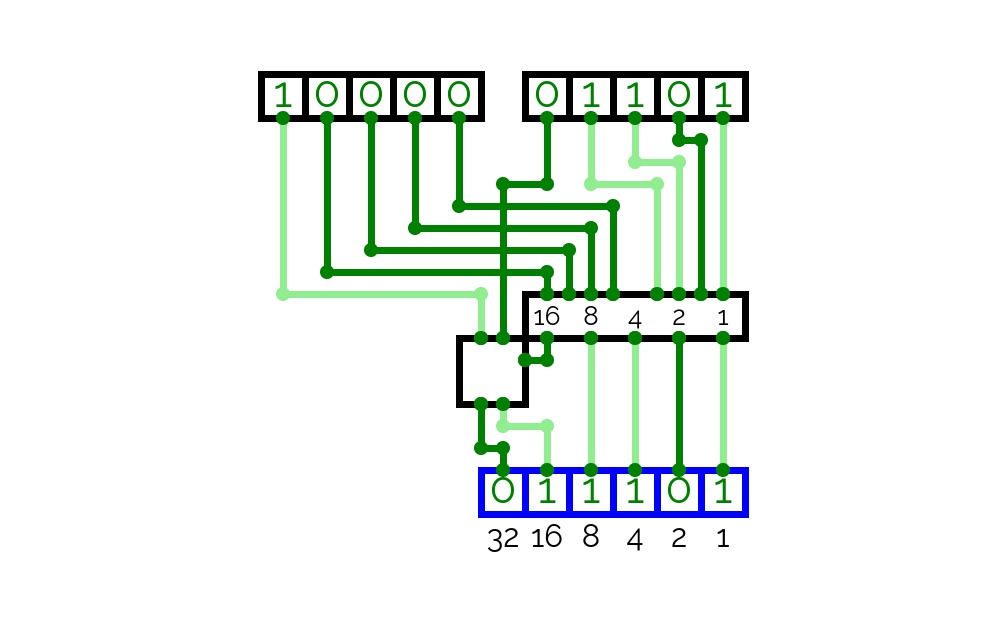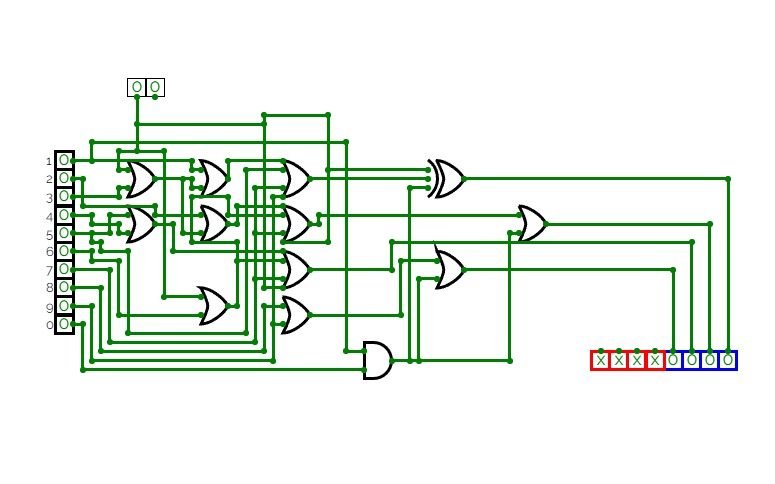4-bit ALU
4-bit ALUDecimal to Binary Conversion
Decimal to Binary Conversion4-bit BCD WIP
4-bit BCD WIP4-bit binary to BCD converter
Binary Calculator
Binary CalculatorA simple binary calculator.
flash adc: thermocode to binary (2 bit)
flash adc: thermocode to binary (2 bit)thermocode to binary converter with bubble error correction (inputs are inverted, so 1111 is binary 00)
4-bit Binary to Grey and Grey to Binary
4-bit Binary to Grey and Grey to BinaryROM decoder 4 bits to 7 segments
ROM decoder 4 bits to 7 segmentsThis version of the decoder 4 bits to 7 segments is built with ROM, within which I wrote the codes 0x3F, 0x06, 0x5B, 0x4F, 0x66, 0x6D, 0x7D, 0x07, 0x7F, 0x6F, 0x77, 0x7C, 0x39, 0x5E, 0x79 and 0x71. This device shows all 16 hexadecimal symbols on the common-cathode LED display, corresponding to the 4 bit binary input.
Async binary down counter
Async binary down counterAsync binary up counter
Async binary up counterbintohex
bintohexThe circuit was made by a beginner to get some experience working with logic gates, k-maps and simulation software, there are many things that can be improved. Open for suggestions.
B8256 V2
B8256 V2RECOMMENDED FOR COMPUTERS
This is the second addition of the B8 Series. Otherwise known as the BURTONABLE 8 256 it is capable of running programs 256 lines long! as well as 7 instructions to use
LDA 0001: Loads the given value into the Accumulator
ADD 0010: The given value will be added to the accumulator
SUB 0011: The given value will be subtracted from the accumulator
OUT 1110: Shows the output of A and B
HALT 1111: Stops all
PRT 0110: Prints a 7 bit ASCII character to the TTY
CLRTTY 0101: Clears the TTY element
DRAW BLACK 1001: Draws the color black to the X (4 bits) and the Y (4 bits)
DRAW WHITE 1011: Draws the color white to the X (4 bits) and the Y (4 bits)
JC 1100: Only jumps up by the given data if 2 negative numbers add up to a positive number
sometimes the codes get corrupted just spam reset a couple times
FUN CODES: To use them, just double click the EEPROM
To retrieve a code just press the save button and then open the dev console (FN + Volume up MAC) or F12 (PC)
To put codes in the EEPROM double click it and paste the code
circle.
2952,2968,2984,2999,2998,2997,2980,2964,2948,2933,2934,2935,1635,1641,1650,1635,1644,1637,3840,0,0,0,0,0,0,0,0,0,0,0,0,0,0,0,0,0,0,0,0,0,0,0,0,0,0,0,0,0,0,0,0,0,0,0,0,0,0,0,0,0,0,0,0,0,0,0,0,0,0,0,0,0,0,0,0,0,0,0,0,0,0,0,0,0,0,0,0,0,0,0,0,0,0,0,0,0,0,0,0,0,0,0,0,0,0,0,0,0,0,0,0,0,0,0,0,0,0,0,0,0,0,0,0,0,0,0,0,0,0,0,0,0,0,0,0,0,0,0,0,0,0,0,0,0,0,0,0,0,0,0,0,0,0,0,0,0,0,0,0,0,0,0,0,0,0,0,0,0,0,0,0,0,0,0,0,0,0,0,0,0,0,0,0,0,0,0,0,0,0,0,0,0,0,0,0,0,0,0,0,0,0,0,0,0,0,0,0,0,0,0,0,0,0,0,0,0,0,0,0,0,0,0,0,0,0,0,0,0,0,0,0,0,0,0,0,0,0,0,0,0,0,0,0,0,0,0,0,0,0,0,0,0,0,0,0,0
I would love to see your codes too so post them in the comments!
THIS VERSION IS OUTDATED HERE IS THE LINK TO THE NEW ONE https://circuitverse.org/users/160624/projects/b8256-v3
Oh and also The original B8 got deleted :(
Burtonable Fortitudo
Burtonable FortitudoUSE ON A COMPUTER
Same as V2 exempt that there is a Jump if zero command
JO: Jumps if the ALU output is 0
And you can under stand things better!
(these instructions arent done)
Binary Adders
Binary AddersA collection of binary adders with Binary, Hex, and Decimal input and output representation
7 segment LED : Number display
7 segment LED : Number displayThis is an Interactive project where you input a number in binary format. You will get an output of the same number in decimal on the 7-segment led display. (if that number = 580. That's my roll no so that's why :) (But you can build one for yourself :)
It will give output only when the input number = 580. Otherwise, it glows an red LED.
You can change this to any number yourself. Just change the connections yourself to the LED and 7 segment display
The input is 12 bits which would support numbers up to 4095. You can increase the bit length of the input for an even greater range.
Get an output of the number you entered on the 7-segment display.
We also have a switch to turn the display off altogether irrespective of the input given.
Submitted by
Name:- Abhinav Deshpande
Roll no.=IMT2022580
DE Project 4:1 MUX adder
DE Project 4:1 MUX adder16 bit decimal display
16 bit decimal displayUses the divide by ten algorithm.
16 bit divider by Sanderokian Stfetoneri.
Calculator
CalculatorOnly addition works right now, i am working on multiplication next
Calculators
Calculatorsbinary calculators
the titles are the range of numbers you can add together
32 bit decimal display
32 bit decimal displayUses the divide by ten algorithm.
32 bit divider by sjp4.


